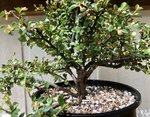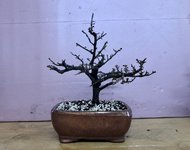Eckhoffw
Masterpiece
Hello. Wasn’t sure which forum to stick this in but.... here we go.
So I’m turning 41 this Friday, and was given a Lowe’s gift card from my family. Yeah!
I’m pretty happy with what I found.
First off, Cranberry cotoneaster ‘ cotoneaster apiculatus’



This tree seems to have pretty good bones.
Nice and full with a good amount of branching. I’ve taken out some problem branches, but all in all, have tried not to do much until I research more.
At this point I just want to clean it up but leave the basic structure.
I’ve been reading up on both of these, but I would really love any kind of advice on putting these guys through their paces.
Second is a pink flowering almond - ‘prunus glandulosa’
The flowers got me on this one. I know zip about it other than that I will b needing another one if I want almonds? I guess I really don’t know about that either.


I’m really not sure what to do with this.
Perhaps after flowers, I will think about the structure of the tree.
Lots of questions to come. Lots of past threads to read.
So I’m turning 41 this Friday, and was given a Lowe’s gift card from my family. Yeah!
I’m pretty happy with what I found.
First off, Cranberry cotoneaster ‘ cotoneaster apiculatus’



This tree seems to have pretty good bones.
Nice and full with a good amount of branching. I’ve taken out some problem branches, but all in all, have tried not to do much until I research more.
At this point I just want to clean it up but leave the basic structure.
I’ve been reading up on both of these, but I would really love any kind of advice on putting these guys through their paces.
Second is a pink flowering almond - ‘prunus glandulosa’
The flowers got me on this one. I know zip about it other than that I will b needing another one if I want almonds? I guess I really don’t know about that either.


I’m really not sure what to do with this.
Perhaps after flowers, I will think about the structure of the tree.
Lots of questions to come. Lots of past threads to read.








